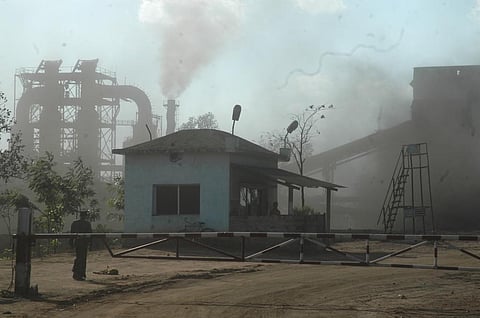

Three years after mandating a continuous pollution monitoring in major industries, the Central Pollution Control Board (CPCB) has released guidelines for implementing this.
The guidelines for a continuous emission monitoring system (CEMS) direct how suitable monitors will be selected, installed, operated and meet compliance requirement. CEMS intends to improve environment compliance enforcement system in India. Similar systems have been successful in Britain, Germany and USA and are being replicated by India and China.
“It will be an easy guide for industries who intend to install CEMS. A local certification programme or an understanding with European standards will help industry in pre-selection of quality certified products,” says Sankar Kannan from SICK India Private Limited, a CEMS manufacturer.
Since the new pollution monitoring system came into force in February 2014, industry nearly failed to follow them amid lack of guidance on enforcement. Investment worth billions by nearly 4,000 industries in the new monitoring system failed to show any significant improvement in pollution control and compliance, due to sub-standard devices, incorrect installations and poor operation. Credible data on emission was sparsely collected. CPCB’s guidelines will help to ensure course correction.
Achyut Mishra, Member Secretary of Madhya Pradesh Pollution Control Board (MPPCB) congratulates the CPCB saying, “MPPCB has initiated CEMS orientation programmes for its officials.” Mishra thanks non-profit Centre for Science and Environment (CSE) for pioneering in CEMS capacity building initiatives.
What the guidelines entail
Implementation is key
Regulators must use the guidelines to assess the current status of implementation and draw a plan for course correction. But smart systems demand smart hands to operate, so skill building for all involved parties should be the next step to ensure implementation.
“The guidelines have come out well, but spirited implementation will be crucial for real success. Capacity building for enforcement is required, which is a big task,” says Prashant Kokil, the chief sustainability officer at Tata Power.
Experts voice the demand for nodal agency to test CEMS performance during installation. Laboratories must be authorised for verifying after installation, calibration and validation. CPCB needs to expedite this process without any further delay. Similarly, the indigenous certification system which has been on the table since the inception of CEMS without any effort to materialise it.
“The guidelines will be a great help in CEMS programme, however the certification system, lab empanelment and capacity building are also important factors that are required for better implementation,” adds Achyut Mishra.
Framing of the indigenous certification system, must be taken by the Ministry of Environment, Forest and Climate Change (MoEF&CC) as it requires the participation of multiple bodies. However, CPCB being an apex environmental regulatory agency, has important role to play—preparation of a strategic plan and get required support from the MoEF&CC for implementation. The enforcement of the CEMS guidelines will be affected if these requirements are not fulfilled.